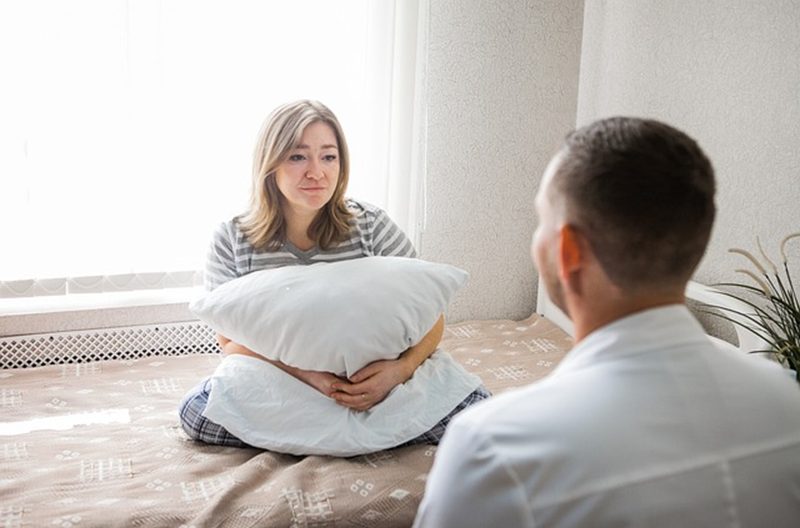Mental health disorders are more than twice as common among young women as they are among young men, according to new data released by NHS England.
The Fourth Wave of the Mental Health of Children and Young People Surveys interviewed over 2,300 children and young people to determine the likelihood that they were suffering a mental disorder.
It found that while male and female young people experience very similar rates of disorder up until the age of 16, from that point onward the sexes diverge significantly.
In the 17-19 age group, 15.4% of young men were identified as having a probable mental disorder based on the responses they gave.
For young women, that same figure was 31.6%.
That disparity becomes even sharper when looking at the 20-25 age bracket, where 13.4% of young men had a probable disorder compared to 30.4% of young women.
More generally, the study found that the rates of probable mental health disorders among all eight to 16 year-olds had climbed from 12.5% in 2017 to 20.3% in 2023, with similar rises observed once male and female data was disaggregated.
On these trends, chief executive at London-based children’s mental health charity YoungMinds Laura Bunt said: “The data confirms the crisis in young people’s mental health is deepening.
“It also lays bare some of the root causes of what is driving the mental health emergency with young people more likely to struggle if they have a parent who is worried about money or they have experienced bullying.
“We know more young people than ever have been referred to mental health services and too many are reaching crisis and facing agonising waiting times.
“Year on year, this data gets worse but instead of action, young people get broken promises in the form of scrapped plans and missed opportunities.”
Explaining the Divide
While NHS England itself was unwilling to speculate on what might be driving these trends, the Turnbridge residential treatment facility for young people and adolescents offers some insight on their website.
From a biological perspective, women and men possess anatomically different brain structures, with different areas of the brain having comparatively larger volumes.
As this translates to behaviour, women have been observed to experience higher levels of empathy and emotional understanding than men.
While these are usually seen as positive traits, they are also linked to an increased risk of depression, anxiety and trauma.
Beyond this, women face a radically different set of life experiences than men, which may contribute to reduced overall mental wellbeing.
Women are overwhelmingly more likely to be the subject of physical, sexual and emotional abuse compared to men.
One in four women are thought to have experienced intimate partner violence, compared to only one in nine men.
The higher likelihood of enduring traumatic events women face may act alongside the fact that they are significantly more likely to face gender-based discrimination than men in leading to worsening mental health.
Into Adulthood
Though the data strongly suggests that young women are more likely to suffer mental health disorders than young men, the gendered impacts of mental health differ into adulthood.
Most notably, suicide rates among men are more than three times those of women and the gap between them has widened since the early 1980s.
In 2022, 5.4 women per 100,000 died by suicide compared to a figure of 16.4 per 100,000 for men.
Men are significantly more likely to die by suicide at every age group, with suicide rates among 90+ year old more the seven times higher among men than among women.
This is in spite of the fact that women are more likely to attempt suicide than men (8% of women in England compated to 5% of men), according to Samritans.
While it may seem paradoxical that men should be so much more likely to die from suicide despite being much less likely to attempt it, some explanation is to be found in looking at the methods by the two sexes.
Women who attempt to take their own life are more likely to do so using ‘non-violent’ means, such as drug poisoning, which are less likely to be fatal.
Men, on the other hand, tend to use more lethal methods of suicide, for example hanging or firearms, and their attempts at suicide have a greater chance at resulting in their deaths.
Exactly why men and women so differ in their main methods of suicider remains the subject of further research, although early suggestions are that societal stigma may have a role to play.
For example, the societal expectations placed on men to be decisive and independent may also prevent them from accepting help for their mental health difficulties.
These same expectations can also encourage them to use more definitively lethal suicide methods, for fear of seeming weak.
Men are also more likely to suffer with substance abuse disorders than women and it is possible that episodes of drug or alcohol abuse contribute to their lethal suicidal behaviour.

When life is difficult, Samaritans are here – day or night, 365 days a year. You can call them for free on 116 123, email them at [email protected], or visit www.samaritans.org to find your nearest branch.
For young people struggling with their mental health, advice and support can be found at https://www.youngminds.org.uk/young-person/





